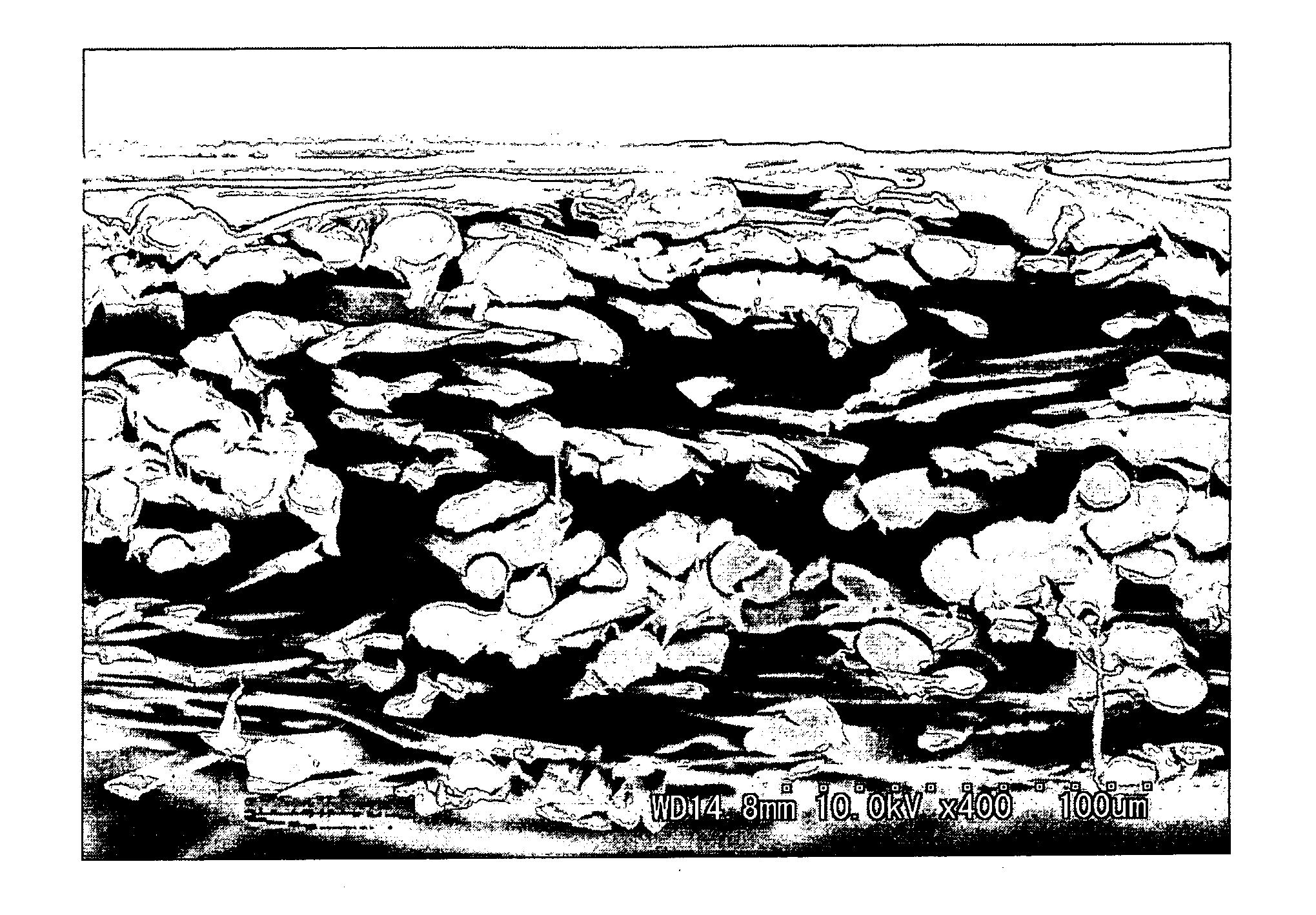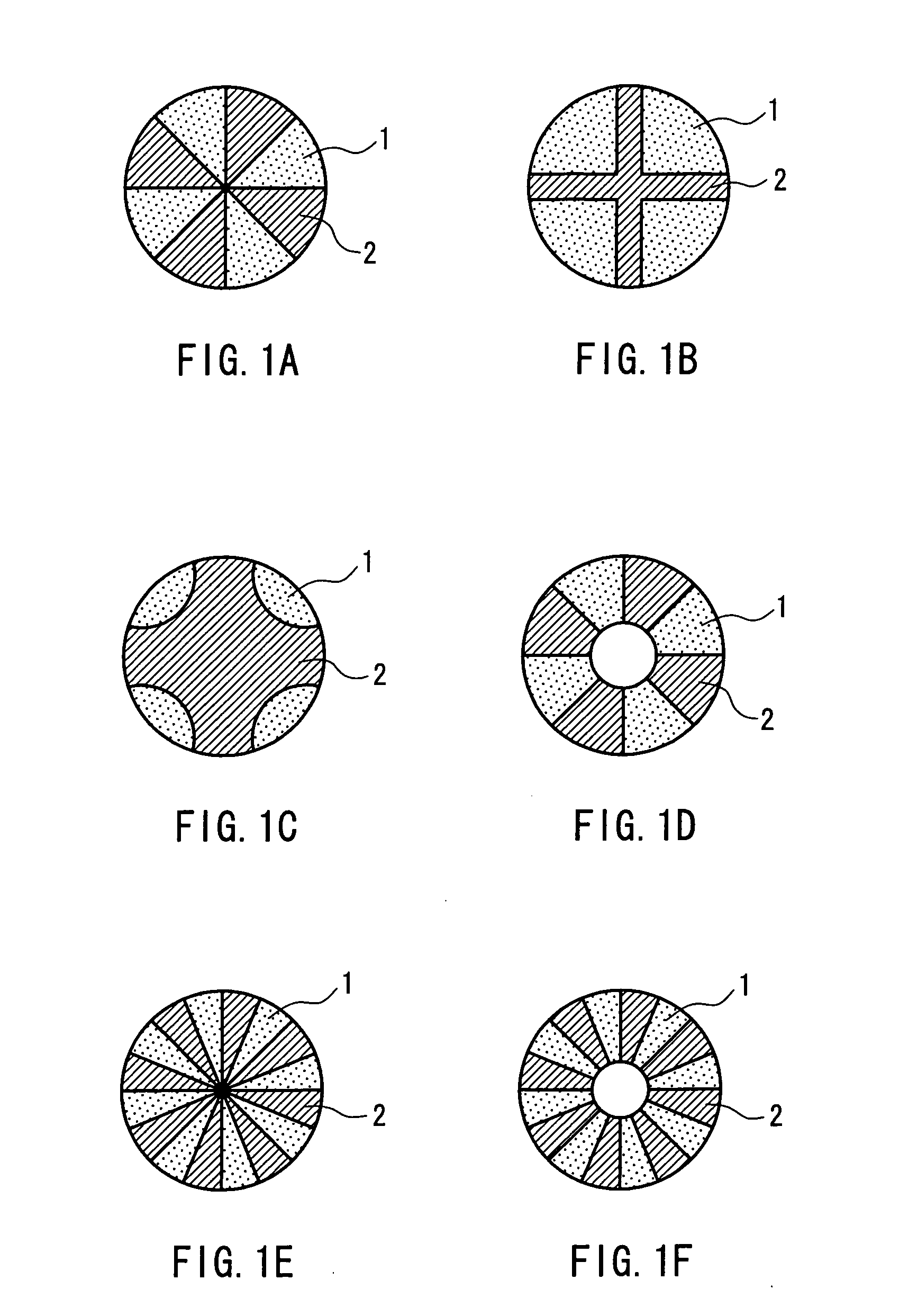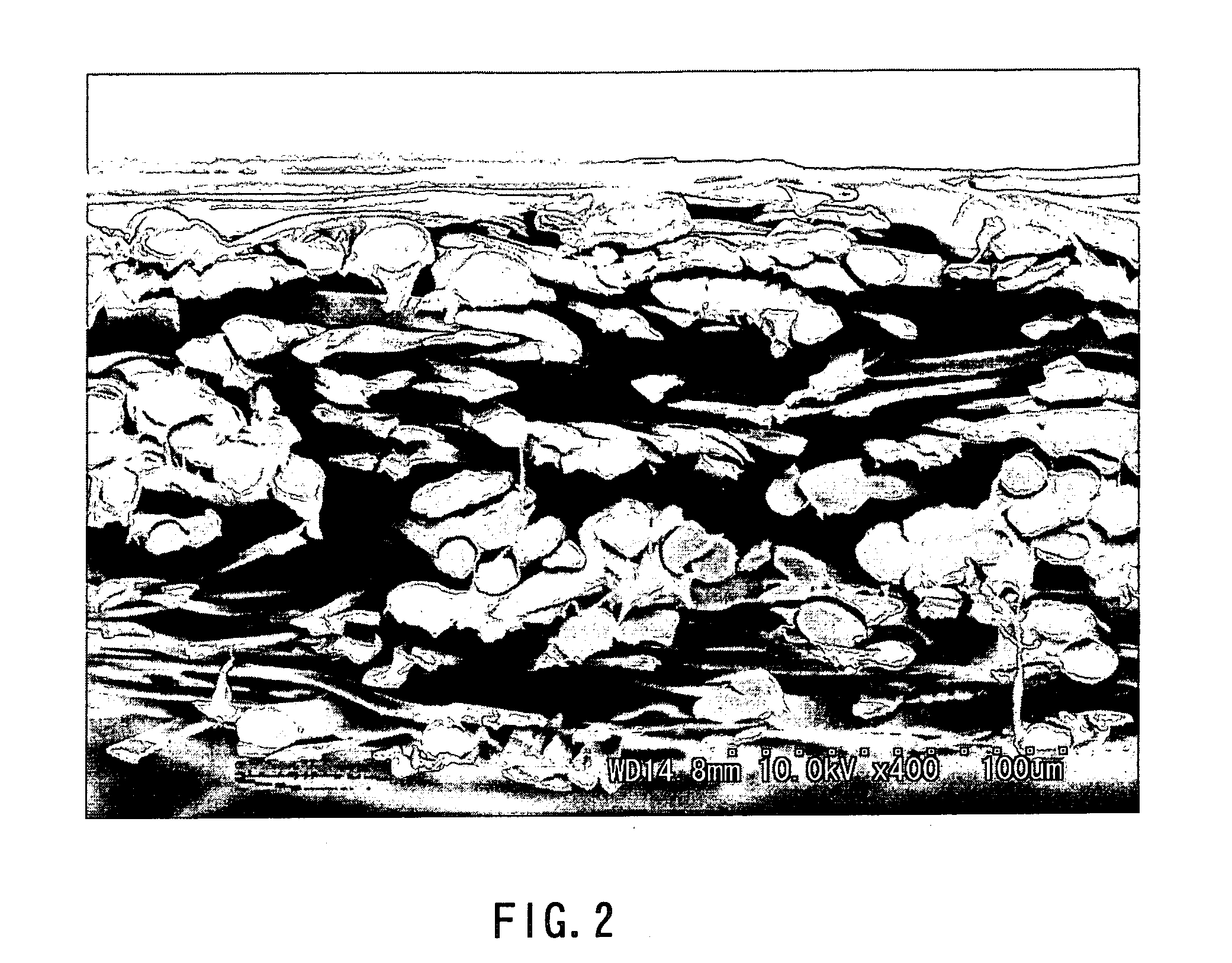Separator material and method of producing the same, and alkali secondary battery separator
a secondary battery separator and separator technology, applied in the field of separator materials, can solve the problems of reduced tensile strength of nonwovens, poor productivity, process performance, etc., and achieve high level of short-circuit withstand capability, high level of self-discharging performance, and high level of process performance.
- Summary
- Abstract
- Description
- Claims
- Application Information
AI Technical Summary
Benefits of technology
Problems solved by technology
Method used
Image
Examples
example 1
[0116] The fiber 1 (40 mass %), the fiber 5 (40 mass %), and the fiber 7 (20 mass %) were mixed to prepare a water-dispersed slurry having a concentration of 0.5 mass %. The fiber 1 was subjected to a splitting process using a pulper where the stirring time was 60 min and the rotational speed was 1000 rpm. From the resultant water-dispersed slurry, a wetlaid web having a mass per unit area of 35 g / m2 was produced using each of a cylinder type wet papermaking machine and a short wire type wet papermaking machine. The wetlaid webs were combined together. Thereafter, the resultant web was subjected to a heat treatment using a cylinder dryer machine at a temperature of 135° C. under a line pressure of 40 N / cm. As a result, the fiber 1, the fiber 5 and the fiber 7 were flattened mainly in a surface layer portion of the nonwoven, while the sheath component of the fiber 5 was melted to bond the component fibers together, to obtain a wetlaid web. In the resultant wetlaid web, about 60% of t...
example 2
[0120] A separator material of the present invention was obtained in a manner similar to that of Example 1, except that: the wetlaid nonwoven that was obtained by subjecting the wetlaid web to the hydroentangling process in Example 1, was subjected to a sulfonation treatment using an SO3gas treatment machine under an SO3gas atmosphere having a concentration of 8 vol % at a reaction temperature of 60° C. for a reaction time of 90 seconds; next, the nonwoven was neutralized with 5% sodium hydroxide solution and was washed with hot water of 60° C., followed by drying at 70° C. using a drum dryer; the resultant nonwoven was wound up using a winder; and thus, a sulfonated nonwoven was obtained. In the resultant separator material, the proportion of flattened fibers that were bonded by the polyolefin thermal bonding short fiber and constituted the nonwoven surface layer portion, was larger than that of an inner portion of the nonwoven. Example 3
[0121] A separator material of the present ...
example 4
[0122] A separator material of the present invention was obtained in a manner similar to that of Example 1, except that: the fiber 3 (40 mass %), the fiber 5 (40 mass %), and the fiber 7 (20 mass %) were mixed instead of the component fibers of Example 1; and a wetlaid web having a mass per unit area of 30 g / m2 was produced using each of a cylinder type wet papermaking machine and a short wire type wet papermaking machine and the wetlaid webs were combined. In the resultant wetlaid web, the split rate of the fiber 3 was about 40%. In a wetlaid nonwoven obtained by subjecting the wetlaid web to a hydroentangling process, the split rate of the fiber 3 was about 90%. In the resultant separator material, the proportion of flattened fibers that were bonded by the polyolefin thermal bonding short fiber and constituted the nonwoven surface layer portion was larger than that of an inner portion of the nonwoven.
PUM
| Property | Measurement | Unit |
|---|---|---|
| Temperature | aaaaa | aaaaa |
| Temperature | aaaaa | aaaaa |
| Temperature | aaaaa | aaaaa |
Abstract
Description
Claims
Application Information
 Login to View More
Login to View More - R&D
- Intellectual Property
- Life Sciences
- Materials
- Tech Scout
- Unparalleled Data Quality
- Higher Quality Content
- 60% Fewer Hallucinations
Browse by: Latest US Patents, China's latest patents, Technical Efficacy Thesaurus, Application Domain, Technology Topic, Popular Technical Reports.
© 2025 PatSnap. All rights reserved.Legal|Privacy policy|Modern Slavery Act Transparency Statement|Sitemap|About US| Contact US: help@patsnap.com



